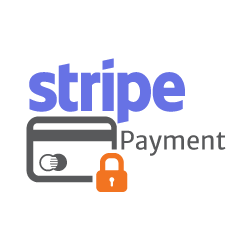What to Know About Providing EMDR Via Telehealth
Does EMDR work when delivered remotely? And if so, how can you best provide a treatment that typically involves your in-person interaction with the client? While the research has been limited, the evidence we do have supports the idea that EMDR can have positive outcomes even when done via telehealth.
In an open trial study done in 2013, EMDR therapy was delivered remotely to a small group of individuals diagnosed with PTSD. Although this was a small study, the results showed that participants experienced positive outcomes when EMDR therapy was provided via telehealth. In addition, Kerry Howard, one of the pioneers of EMDR therapy, posited during a conference sponsored by EMDR Europe that EMDR was an effective form of treatment when delivered via an online platform. Clearly, additional research is needed. But initial findings point to positive results. As telehealth usage continues to expand, additional research is expected.
Special Considerations for Telehealth-based EMDR
If you currently use EMDR, you know that it’s one of the most resource-intensive forms of therapy. So delivering it effectively in a remote context requires that you lay extensive groundwork prior to beginning treatment. EMDR International Association has done an extensive examination of the ethical, technical, and safety considerations unique to EMDR’s use in an online format. The Virtual Training and Therapy Task Group’s report is an invaluable resource for any EMDR-trained therapist interested in working with clients via telehealth. We’ve condensed their full guidance document below into an easy-to-read starter guide for providing EMDR therapy via telehealth.
Ethical Considerations for Providing EMDR via Telehealth
Many of the ethical considerations that relate to telehealth-delivered EMDR Therapy have strong similarities with those governing in-person treatment. But there are some unique hurdles to conducting telehealth sessions that you’ll need to overcome.
- Fidelity to the EMDR Therapy Model — EMDR therapy can only be provided by an EMDR-trained therapist. Although the online format may present some unique logistical challenges, EMDR therapy must be provided with fidelity regardless of the setting. The size of the client’s screen should allow for the full breadth of movement across the midline. Ideally, the Dual Attention Stimulus should be administered by the therapist in discrete sets.
- HIPAA Compliance/Confidentiality — Although the HIPAA-compliant secure connection requirement has been temporarily waived at the federal level, best practice always involves using a video platform that provides a HIPAA-compliant secure connection. Electronic client records should be stored securely to protect confidentiality. When possible, record storage and communications with clients should be encrypted.
- Informed Consent — Informed consent is always required before beginning any form of therapy. However, with teletherapy, informed consent should also include the inherent risks associated with remotely delivered interventions, a backup plan for technology failures, and mutually-agreed-upon procedures for handling a crisis.
- Geographical Considerations Around Licensure — Before working with a client remotely, gather information on the licensure requirements for your jurisdiction and the one where your client resides. Check with the licensure boards in both locations before beginning therapy to verify that your license permits you to work in both places if you are in different locations.
Client Safety
During telehealth EMDR therapy, you won’t have the ability to intervene immediately during a crisis as you would if you were in the same physical location as the client. Creating a safety plan in collaboration with the client before therapy begins is critical to ensuring the client’s wellbeing.
- Dealing with Abreaction and Dissociation — As you know, abreaction and dissociation can occur during the later stages of EMDR, so it’s crucial to work through an actionable plan with the client on how to proceed if these occur during or in-between sessions. How will you help clients with grounding? What objects in their remote environment could help with this? In some cases, a client may not yet be resourced enough to be in these situations, so you’ll need to use your professional judgement.
- Emergency Preparedness — When meeting with clients remotely, gather all applicable emergency contact information ahead of time. Know where the client is at the time of the session, and be prepared with emergency contact information for first-responders in the client’s community. Dialing 911 from your home without this information will not help someone located elsewhere.
Insurance Billing and Malpractice
COVID-19 necessitated changes to both private payer and Medicare/Medicaid insurance reimbursement practices, and these changes have made billing for telehealth therapy much easier. As telehealth becomes the norm during the pandemic, insurers are loosening restrictions and becoming willing to pay for remote care. But you’ll still want to check with your client’s insurers to see if and how they reimburse for telehealth.
You’ll also want to consider your malpractice insurance since every policy is different. It’s best to verify that you’re covered when providing telehealth EMDR therapy.
- Verifying Telehealth Reimbursement — Currently, Medicare and Medicaid pay in-person rates for services provided via telehealth. Many private payers are currently doing the same. For more in-depth coverage on this topic, check out Telehealth Regulations: Federal, State, and Private Payer.
- Verifying Malpractice Insurance Covers Therapy Provided via Telehealth — Before you get started working with clients remotely, verify with your malpractice insurance carrier that it provides coverage for telehealth services, particularly EMDR.
Tools and Techniques for Providing EMDR Remotely
One of the most challenging aspects of providing EMDR therapy remotely is administering bilateral stimulation (BLS). The standard method of moving your fingers back and forth in front of the clients eyes is difficult to perform effectively since most screens just aren’t wide enough to accommodate the necessary breadth of movement. Luckily, there’s a mix of high-tech and low-tech methods available for providing BLS. Everyone’s unique, so it may take a few tries to locate the method that works best with each client.
- Butterfly Hug — The butterfly hug involves the client administering the bilateral sensations by crossing their hands in front of their chest with the middle fingers coming to rest right below the collarbone. With eyes closed or partially open, the client will begin to move their hands slowly — like a butterfly opening and closing its wings. While performing this action, the client should breathe slowly and deeply.
- Tapping — A variation on the Butterfly Hug is simply tapping on the knees or top of the thighs. For some clients, this will be more effective than the Butterfly Hug.
- Software Solutions — There’s a range of EMDR-specific platforms available that have BLS components built into the software. Light bars, moving dots, and other forms of visual and auditory stimuli offer a range of additional options. Some of the more popular software systems include REMDR and Easy EMDR.
- TouchPoints™ — TouchPoints™ are devices for managing stress and anxiety that involves BLS. These gently-vibrating devices use alternating pulses to provide BLS.
Remote EMDR is Working
Therapists that we’ve talked with have reported good success with the patients they’ve worked with to provide EMDR via telehealth. While there are challenges to working remotely, in most cases, they can be overcome. And as demand continues to increase for telehealth-delivered therapy sessions, we’re likely to see new strategies evolve around delivering EMDR remotely.
For more tips and tricks on Telehealth for your practice, visit out The Definitive Guide to Telehealth Guide.
See how Thera-LINK, a HIPAA-compliant telehealth platform, can help you connect effectively with your clients.







